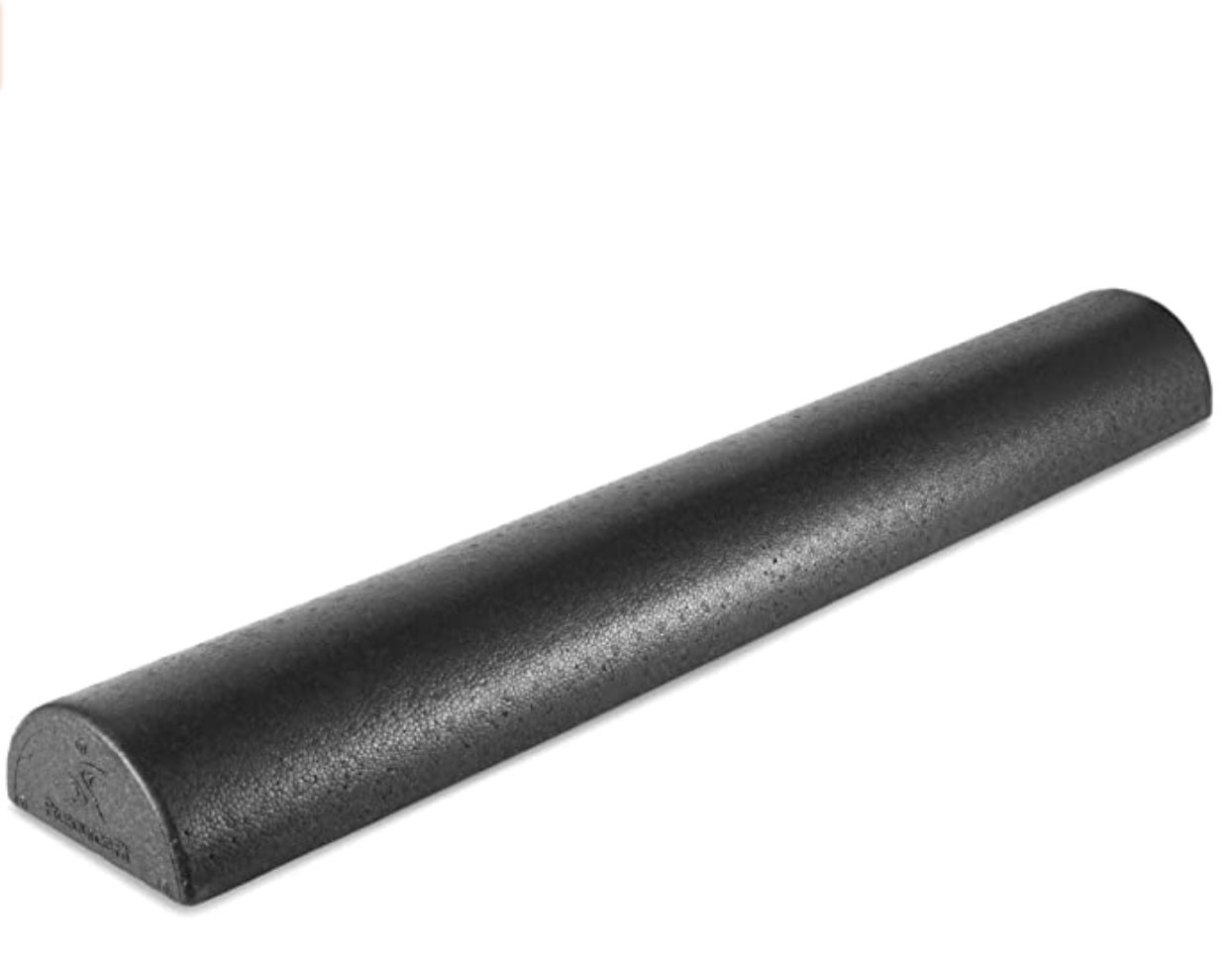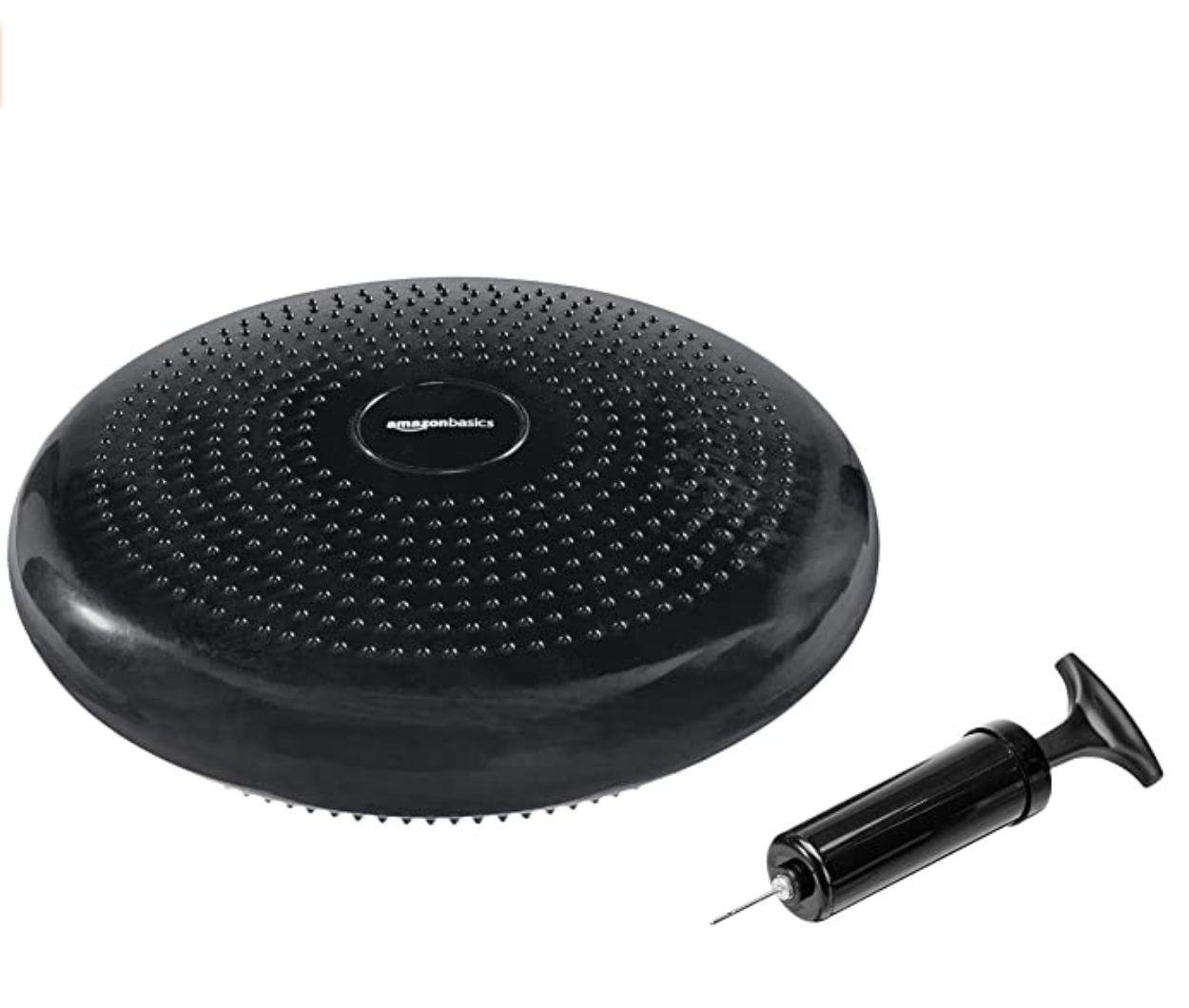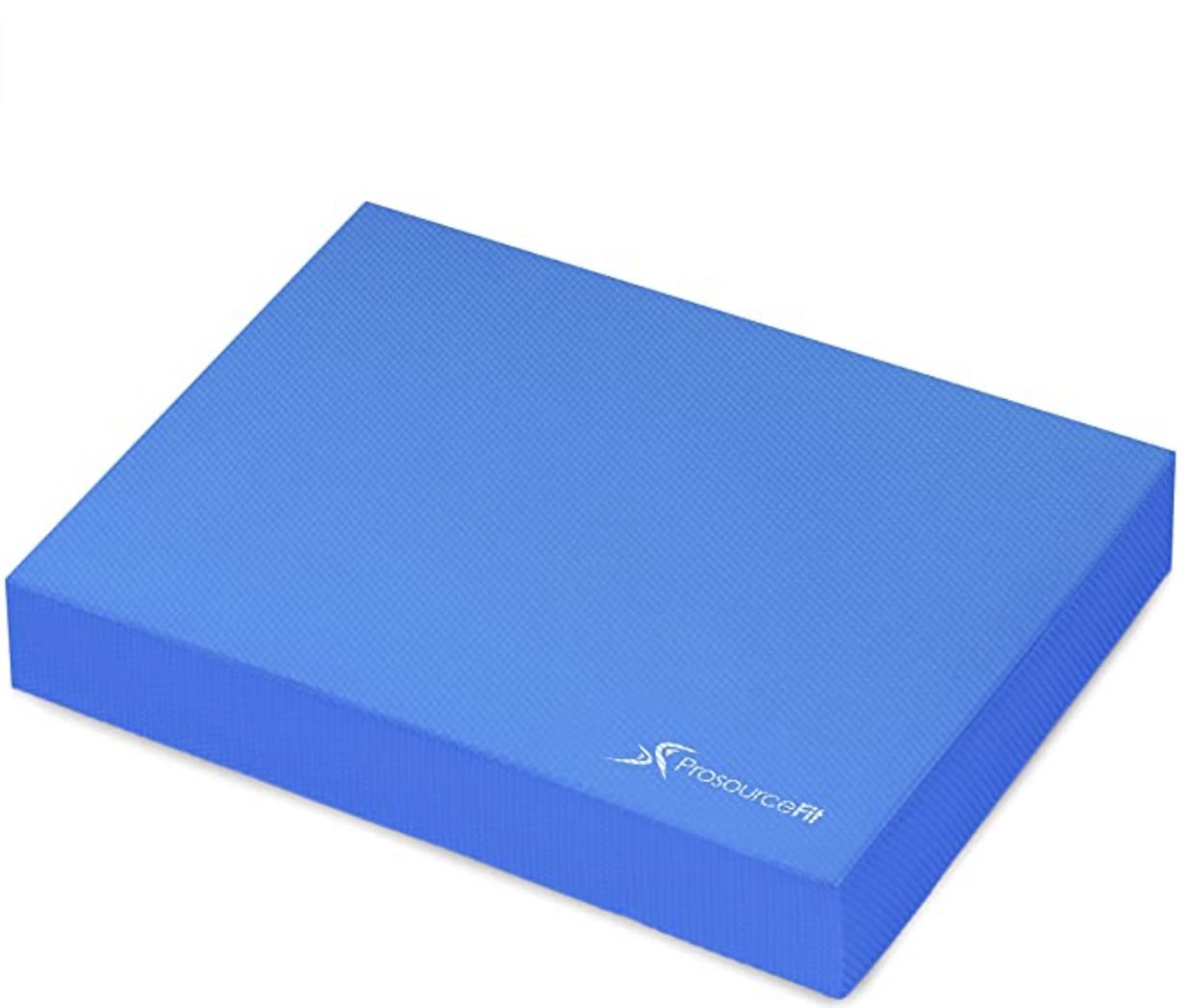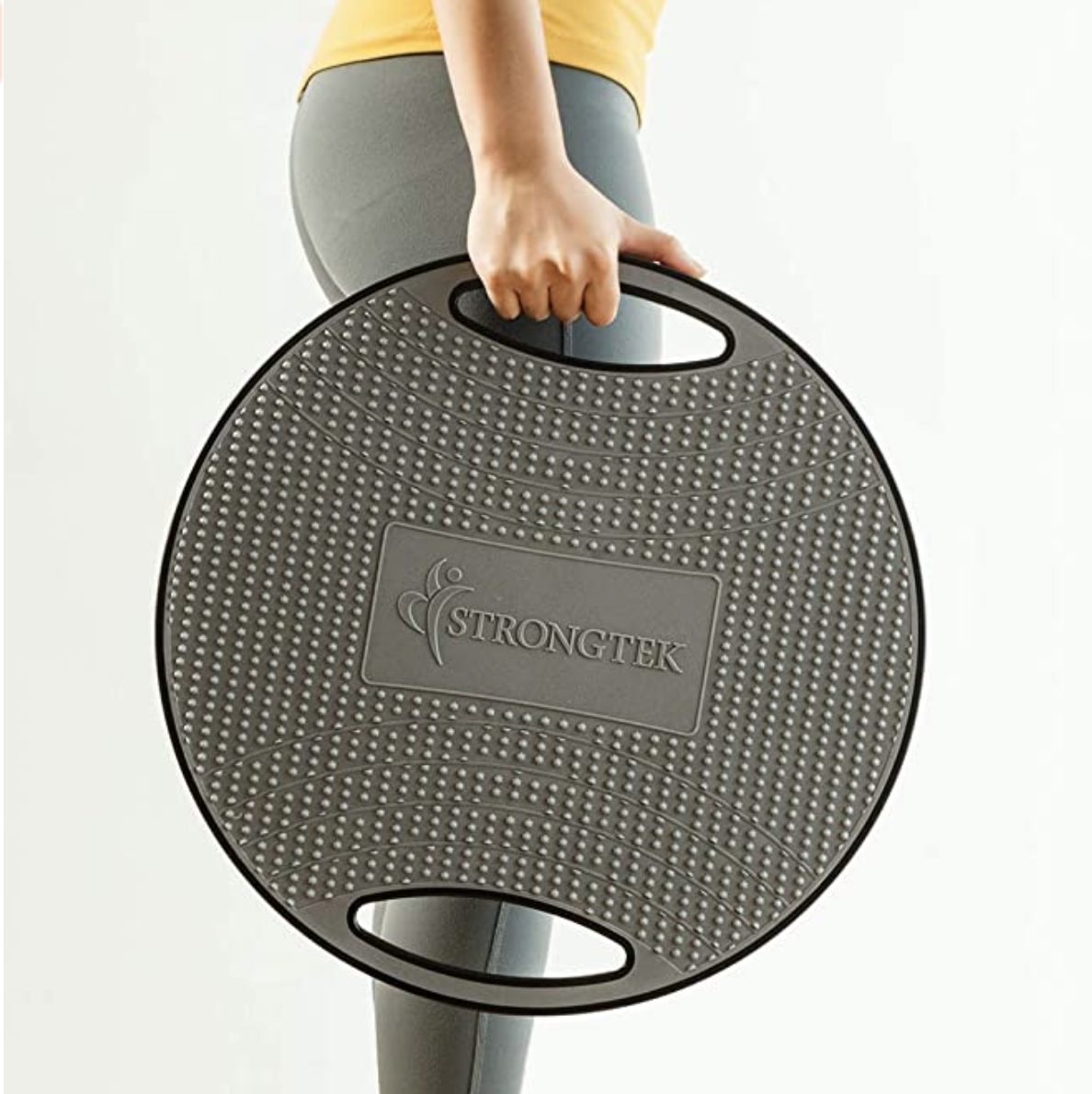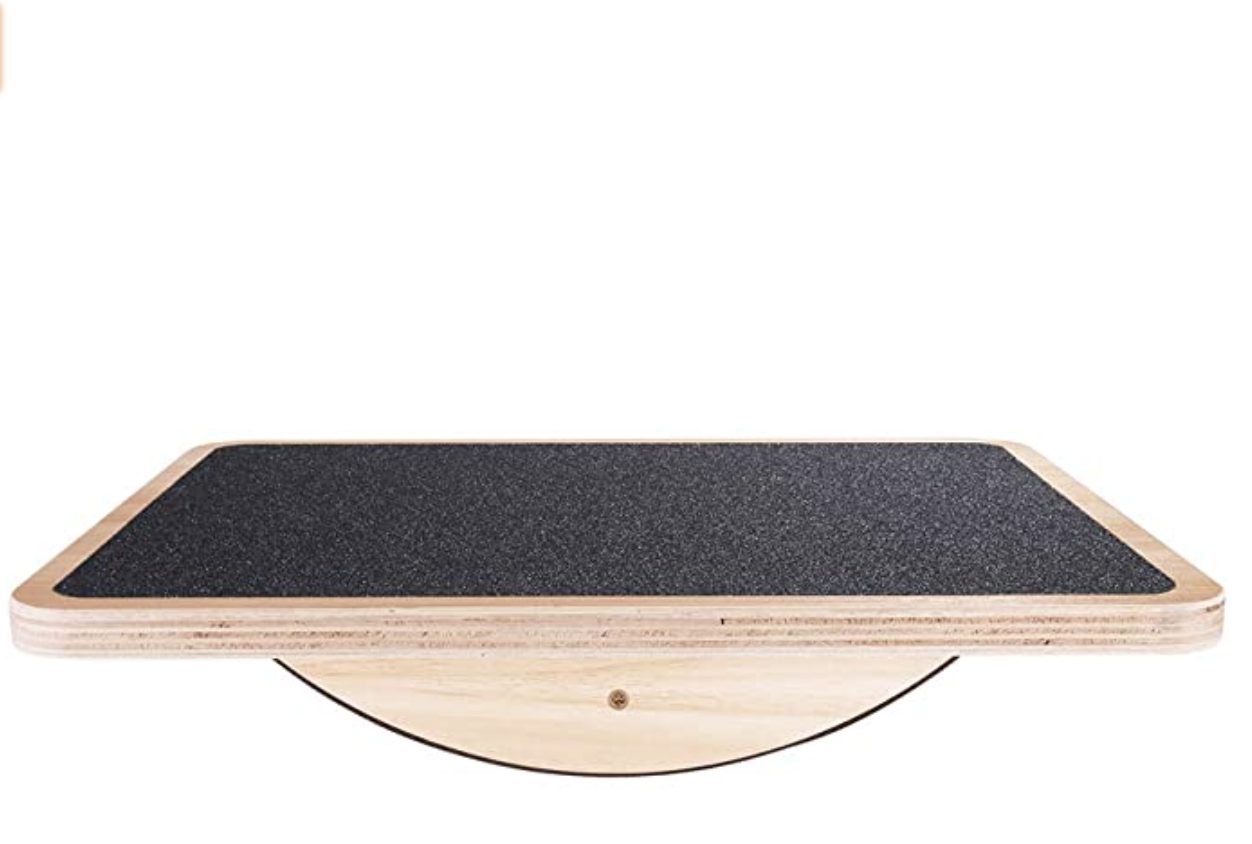A question that I am frequently asked is, “what are the best balance training tools for hypermobility?”
Those of us with hypermobility know that balance is extremely important. And, if you’re at all familiar with my program, you probably know that focusing on your stability with your balance is of the utmost importance for your safety.
Here are some of the best balance training tools for people with hypermobility.
The 1/2 Foam Roll
1/2 foam rolls are great balance items that allow you to work on walking on uneven ground and controlling your position. When using the 1/2 foam roll:
- Focus on controlling your balance through your core and hips and not through your feet, keep them soft.
- Use your core to keep you centered and forward. The most common thing people do is lean too far backward and extend through their back to try to maintain their balance.
- Think of keeping yourself and little more forward and gravity will help you to find center.
You can check out a foam roller that I recommend here.
The Balance Pad
Balance is defined as an even distribution of weight enabling someone or something to remain upright and steady or to keep or put (something) in a steady position so that it does not fall. These are both pertinent to controlling hypermobility.
A synonym for balance is stability, but they are not necessarily the same thing. We tend to think of balance as something like a tightrope walker. You are successful as long as you don’t fall. That does not mean you are stable. You can have good balance and yet poor stability.
For hypermobility, you want to focus on the stability aspect, and if you improve your stability, your balance will improve.
There are two types of balance pads that I recommend. You can find them both below.
Balance Pad Option One
Balance Pad Option Two
The BOSU Ball
A BOSU is a half ball device where the name is an acronym which stands for “Both Sides Up” a reference to the two ways a BOSU ball can be positioned. When the dome side faces up, the BOSU ball provides an unstable surface while the device remains stable.
This is a great balance trainer that has a lot of possibilities.
When the ball side is up it allows you to work on your foot and ankle support and controlling your leg position. When the flat side is up, it allows you to focus more on your hip and knee and less at the foot and ankle.
The BAPs Board
A BAPS Board stands for “Biomechanical Ankle Platform System.” Learn more about BAPs Boards here.
A progression of the balance board is a BAPS board which allows you to move and control all directions.
This board is more difficult because the board won’t automatically go the right direction by shifting your weight. You now have to keep yourself centered and controlling where you move.
The Rocker Board
Begin standing on a rocker board, holding onto a stable surface for support. I recommend using a counter or large piece of furniture, something you can’t move or pull over. Make sure the area is clear of obstacles and that your movements are slow and controlled and maintain your balance during the exercise.
Consider Homemade Options
Try a rolled up towel with duct tape
- Try taking a large bath towel, roll it up and tape it in place with duct tape.
Consider incorporating a decorative pillow
- These pillows tend to be a little more firm than bed pillows and work better for balance work.
Landscaping
- Standing and walking on river rock, woodchips, or other landscaping materials can provide the uneven ground you are looking for to practice your balance.
Things To Consider Before Purchasing
When purchasing these balancing tools, although they can be incredibly helpful, it’s important to consider:
Space
Do you have the space to store one or more of these tools? Although they aren’t particularly large, they do take up space. And the more tools that you have the more room they will take up.
Cost
It’s also important to ask yourself, “will I use these tools enough to make it worth it? Can I use these tools for other things or other exercises as well?”
Barriers
Also ask yourself, “what are my barriers to using it?”
Is the place that you will be storing this tool or multiple tools conveniently accessible? Or can it be left out? Does it need to be moved? Or is it a stationary tool?
Is It At Risk For Damage?
One last thing to keep in mind when purchasing these balance tools are other factors of influence. For instance, will these tools be accessible to kids and animals where the likelihood of the tool getting damaged, chewed on, or popped is greater?
Start Using Your New Tools
Once you have purchased or DIY-ed these best balance training tools for hypermobility, work on your balance for 3-5 minutes at your selected level every day or most days.
Your selected level will be the level that works best for you providing a challenge but is not too difficult. Focusing on your balance consistently is really beneficial. It doesn’t require a lot of time each day to improve but doing these exercises daily will make a significant difference.
Looking for an online support team? Join the Hypermobility Solution Facebook Group here!
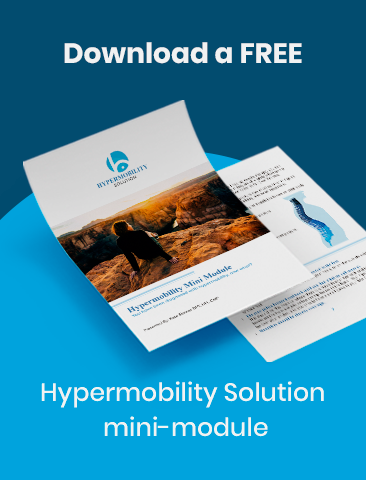
About Kate

Kate Skinner is a Doctor in Physical Therapy, co-founder of Great Divide Physical Therapy, and creator of Hypermobility Solution.
Recent Posts


